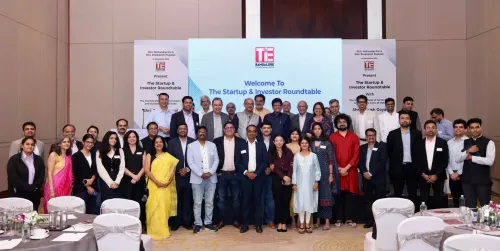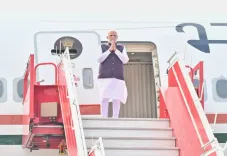Approximately Half of Aspirational Districts Experience Significant Decline in Multi-Dimensional Poverty

Synopsis
Key Takeaways
- About 46% of 106 aspirational districts saw a decrease in poverty.
- The Multidimensional Poverty Index (MPI) provides a holistic view of poverty.
- Global consensus supports non-monetary measures in poverty assessment.
- PM Modi highlights the success of aspirational districts.
- Rural poverty rate drastically decreased to 4.86%.
New Delhi, April 11 (NationPress) Nearly 50% of the aspirational districts across the nation have experienced a rapid decrease in multi-dimensional poverty levels, with Madhya Pradesh, Andhra Pradesh, Assam, and Tamil Nadu at the forefront.
Data from Niti Aayog’s ‘Multidimensional Poverty Index 2023’ indicates that 46% of the 106 aspirational districts have reported a decline in multi-dimensional poverty.
Historically, poverty has been evaluated by looking at the financial resources accessible to individuals or households. The Multidimensional Poverty Index (MPI) is now recognized as a more straightforward and holistic method to gauge individuals' deprivation and poverty.
This index captures and illustrates the results of economic development, income distribution, and various governmental initiatives.
Moreover, there is a global consensus that non-financial metrics complement financial ones to encompass the diverse facets of poverty.
This detailed approach is crucial in India's multifaceted context, allowing for targeted strategies to tackle severe poverty and uphold the notion of inclusivity, ensuring that “no one is left behind.”
Prime Minister Narendra Modi has noted that some aspirational districts have outperformed both national and state averages.
“Previously, the government categorized 100 districts as backward, many of which were in the Northeast and tribal regions. We modified this strategy, rebranding them as aspirational and deployed initiatives in a mission-oriented manner. Esteemed institutions and publications have lauded India’s aspirational districts initiative,” PM Modi stated during a recent event in the national capital.
In addition, a report by SBI Research revealed earlier this year that India’s rural poverty rate has dramatically decreased to 4.86% in the financial year 2023-24, down from 25.7% in 2011-12, while urban poverty has reduced to 4.09% from 4.6% in the same period.
“On an aggregate basis, we estimate that poverty rates in India may now fall within the 4% to 4.5% range, indicating a near absence of extreme poverty,” the report asserted.
The substantial reduction in the rural poverty rate is attributed to increased consumption growth among the lowest 0-5% income decile, supported significantly by government assistance.









